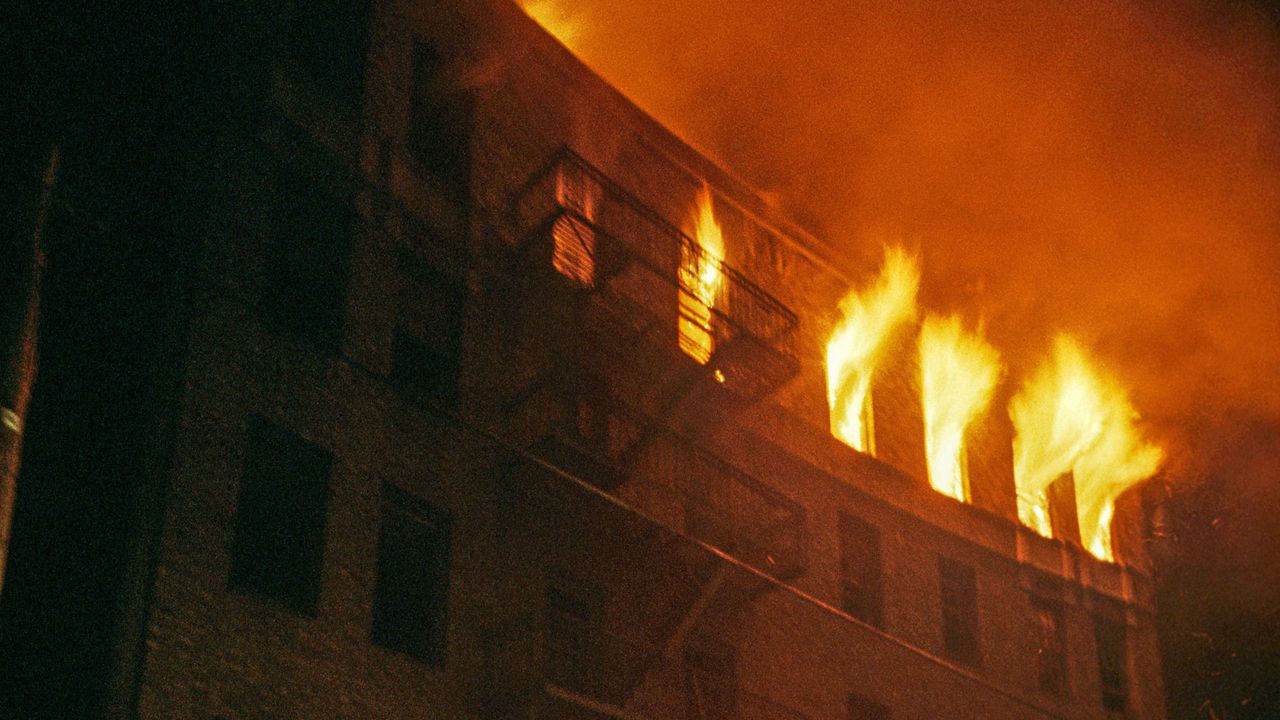The Bronx firestorm was selective not just in which buildings burned but in how they did so. The typical Bronx walkup was built of brick and concrete. A fire might not do much damage unless it burned the roof, in which case water would total the building. Rock Master Scott and the Dynamic Three proved to be keen students of pyrodynamics, because it was often the roof that caught fire. It was as if someone were trying to do as much damage as possible to privately owned—but not publicly owned—rental properties.
“In the community, we knew that landlords were burning their buildings,” the educator Vivian Vázquez Irizarry has said. This was an open secret, reported at the time and arising even in Moyers’s documentary. It made little dent on public consciousness, though. “When I first moved to New York,” the writer Ian Frazier remembers, “I assumed, as many people did, that the poverty and fires in the Bronx were just the way the Bronx was.”
In 2018, Vázquez and Gretchen Hildebran released a documentary, “Decade of Fire,” that exonerated the Bronx. Now a historian who worked on that documentary, Bench Ansfield, has published a formidable book, “Born in Flames” (Norton). The fires were set not by unruly tenants, Ansfield charges, but by landlords seeking insurance payouts. The late twentieth century gave rise to a horrifying dynamic, throughout the country but especially in the South Bronx, whereby owners had reason to burn their buildings and few people in power had reason to care.
The thought of cities burning in a racial reckoning has long haunted the American imagination. The era of slavery was also the age of wood, and nearly every major slave rebellion and conspiracy involved arson. In one of the most fearsome plots, the Denmark Vesey conspiracy of 1822, rebels allegedly planned to burn down Charleston.
It was easy to understand why slaves might torch cities. But the fires emerging in the mid-sixties, just as the civil-rights movement was racking up victories, were harder to interpret. Were they protests? Meltdowns? Crimes? As arson and violence convulsed Black neighborhoods, white support for the movement plummeted.
To conservatives, this was vindication. In an influential essay, “Looting and Liberal Racism” (1977), Midge Decter argued that New York’s racial liberalism had done nothing for Black and brown people other than convince them that there were “virtually no crimes” for which they’d be held accountable. Riots fed law-and-order conservatism.
Of course, there were other views. “This ain’t no riot, brother, this is a rebellion,” the Black Power activist H. Rap Brown declared in Cambridge, Maryland, in 1967. Which is to say, the people in the streets weren’t riffraff running amok but activists with aims. The problem was white violence, Brown explained, and, if it didn’t stop, Black people should “burn this town down.” About an hour after Brown made that speech, as if to prove his point, police shot him. (He lived.)
Historians have come around to his view. Gerald Horne’s “The Fire This Time” (1995), Peter B. Levy’s “The Great Uprising” (2018), Hinton’s “America on Fire,” and, most recently, Ashley Howard’s “Midwest Unrest” treat the tumult as a purposeful, even admirable revolt against racism. Yet these histories focus on the uprisings that wound down by 1972, not on the harder-to-explain fires that followed. Hinton, in another book, briefly connects the Bronx fires to Black revolts—both stemmed from excessive policing and incarceration, she says—but leaves it there.

